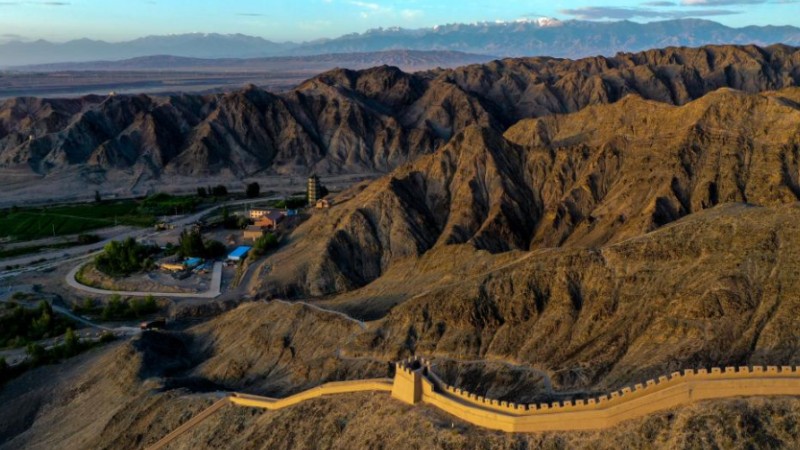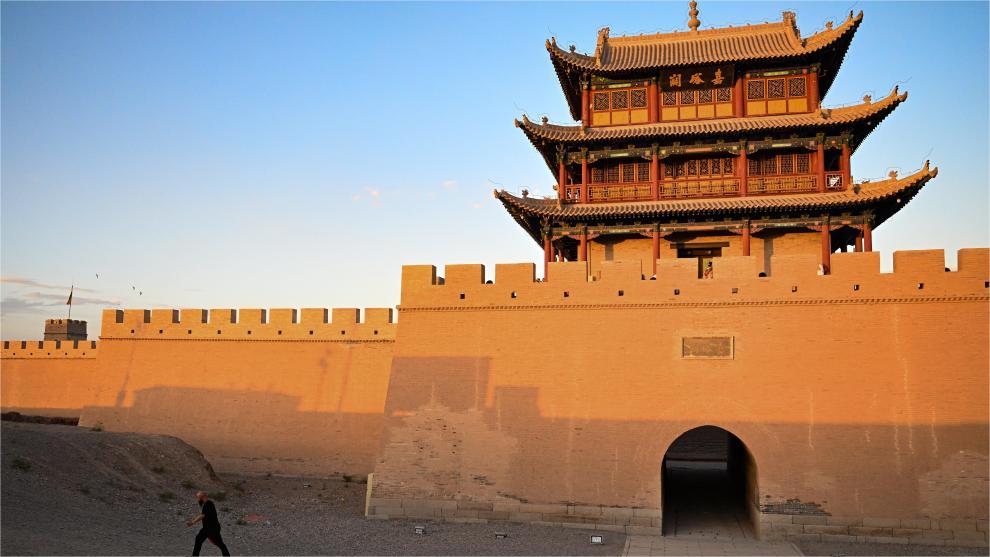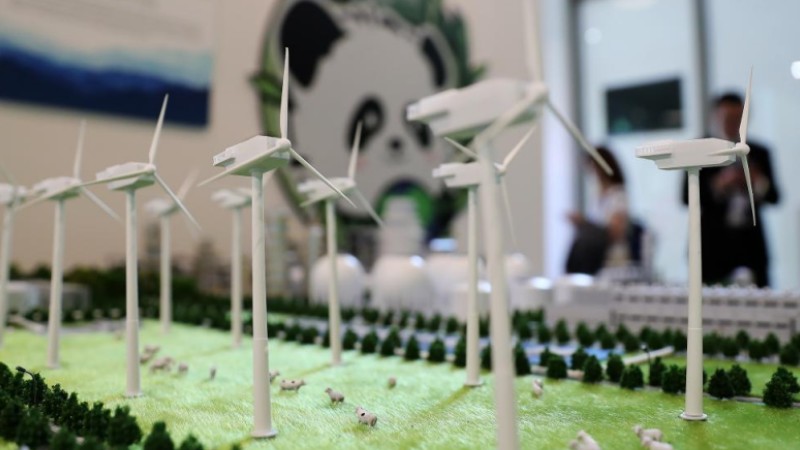Xingye in S China's Guangxi paves way toward prosperity through tea industry
The winter tea harvest season has entered the final stage in Shanxin township, Xingye county, Yulin city, south China's Guangxi Zhuang Autonomous Region. Yang Qingmei, a local tea grower, arrived at a tea cooperative, where freshly picked tea leaves awaited their turn to be fried.
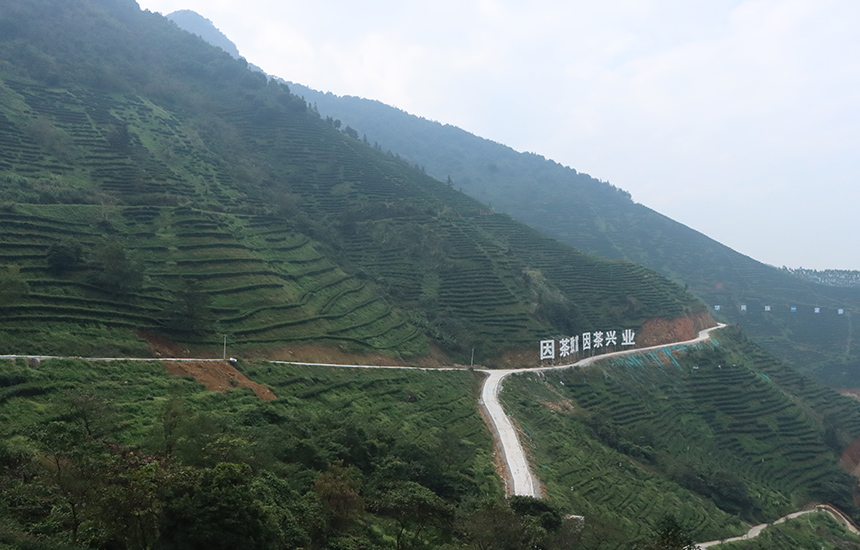
Photo shows tea trees planted in mountains in Xingye county, south China's Guangxi Zhuang Autonomous Region. (Photo/Huang Ziyue)
Xingye county boasts of climate and soil favorable for tea cultivation. The tea is rich in trace elements, producing green tea water with a delightful and lingering sweetness.
"Handmade tea in Shanxin township is a signature of Yulin city, representing the deep connection between tea makers and tea leaves. Factors such as the temperature and the tea maker's mood and strength contribute to the quality of the tea leaves," explained Yang, who is also a skilled tea maker.
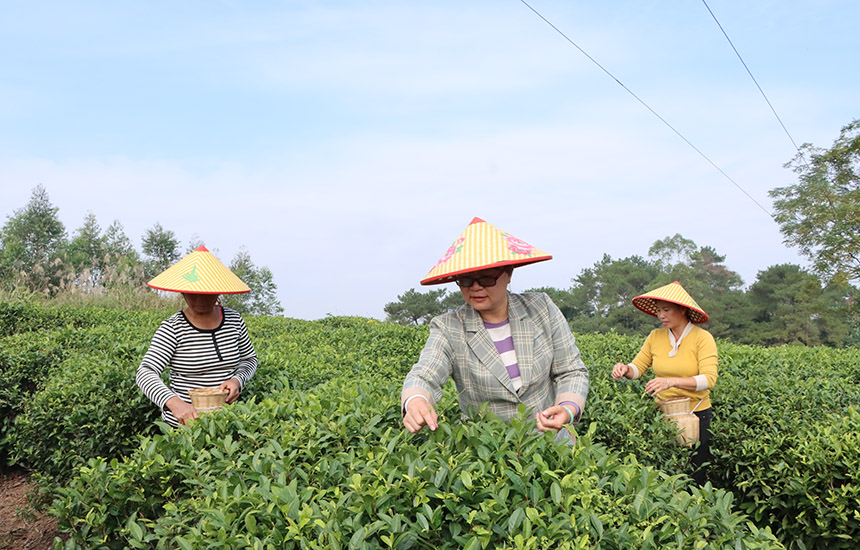
Yang Qingmei (middle) and villagers pick tea leaves in Xingye county, south China's Guangxi Zhuang Autonomous Region. (Photo/Huang Ziyue)
Yang learned the skills from Chen Tianhua, who is the head of the tea cooperative Yang works for, and principal of a tea vocational school in Yulin. For years, Chen has been committed to improving traditional tea making techniques, enhancing the quality of handmade tea, and promoting local tea culture.
Thanks to such efforts, traditional tea making techniques have gained widespread adoption. In February 2022, Xingye tea became a geographical indication product. The same year, the total output of the tea industry in the county was worth 180 million yuan ($25 million), and more than 10,000 local farmers increased their incomes through the industry.
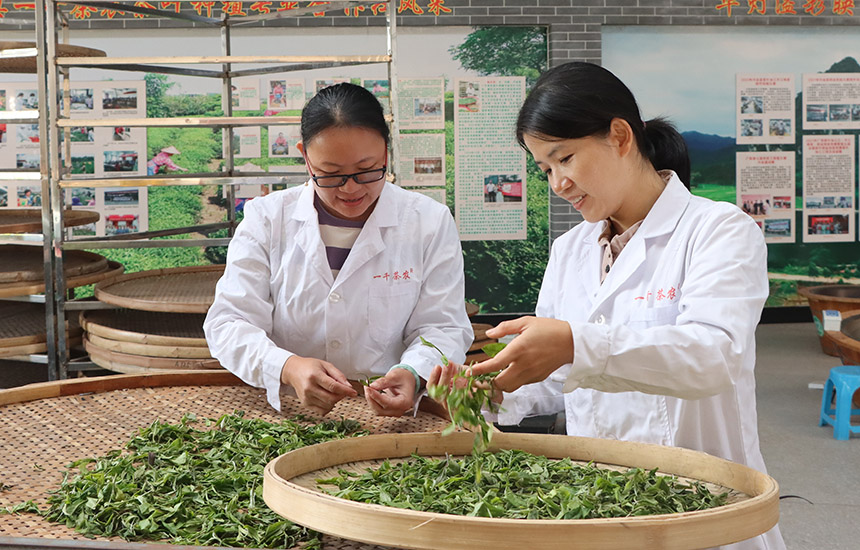
Yang Qingmei (left) and a fellow worker ventilate freshly picked tea leaves in Xingye county, south China's Guangxi Zhuang Autonomous Region. (Photo/Huang Ziyue)
Tea gardens span over 20,000 mu (1,333 hectares) in Xingye county, including more than 4,000 mu dedicated to organic and green tea cultivation.
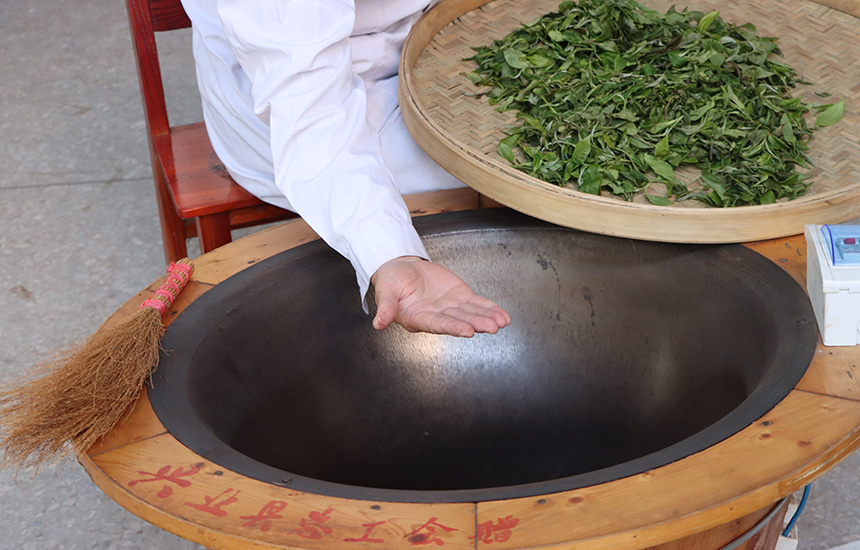
Yang Qingmei feels the temperature of a pot before starting to fry tea leaves. (Photo/ Huang Ziyue)

Yang Qingmei starts to fry tea leaves. (Photo/ Huang Ziyue)
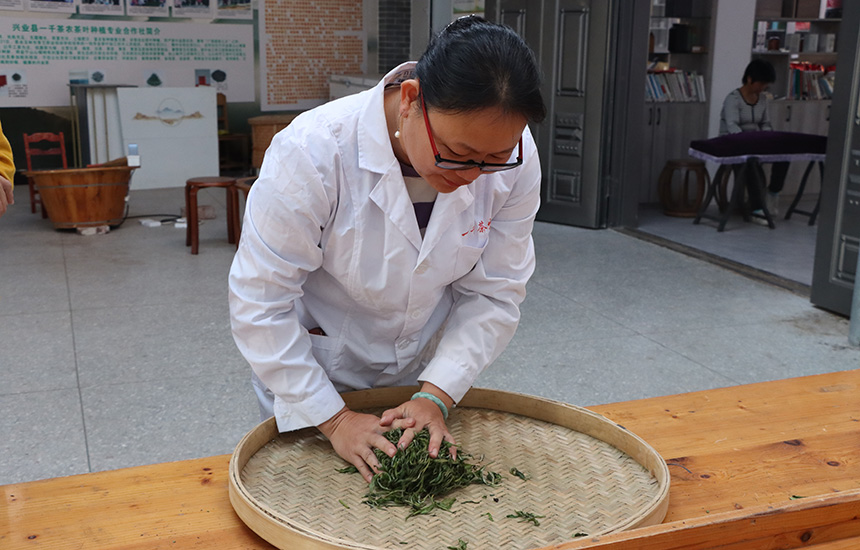
Yang Qingmei rolls and twists tea leaves. (Photo/ Huang Ziyue)
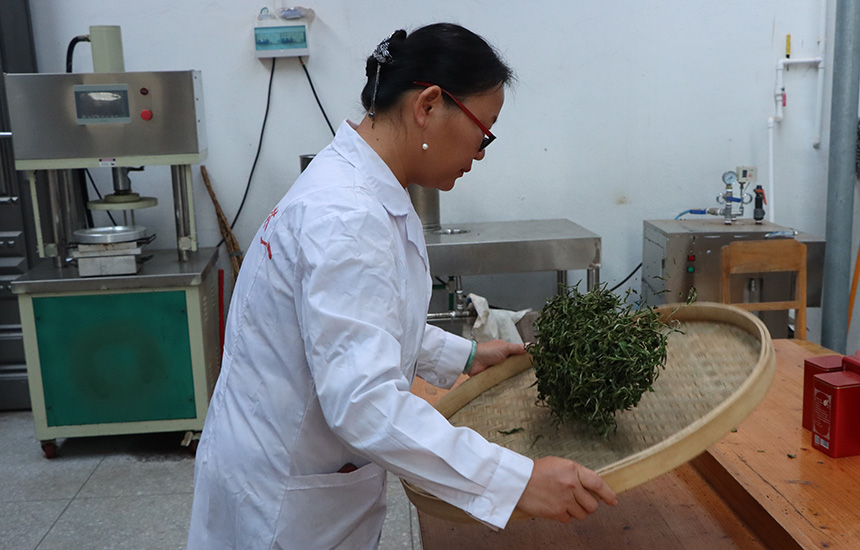
Yang Qingmei separates tea leaves from the shredded ones. (Photo/Huang Ziyue)
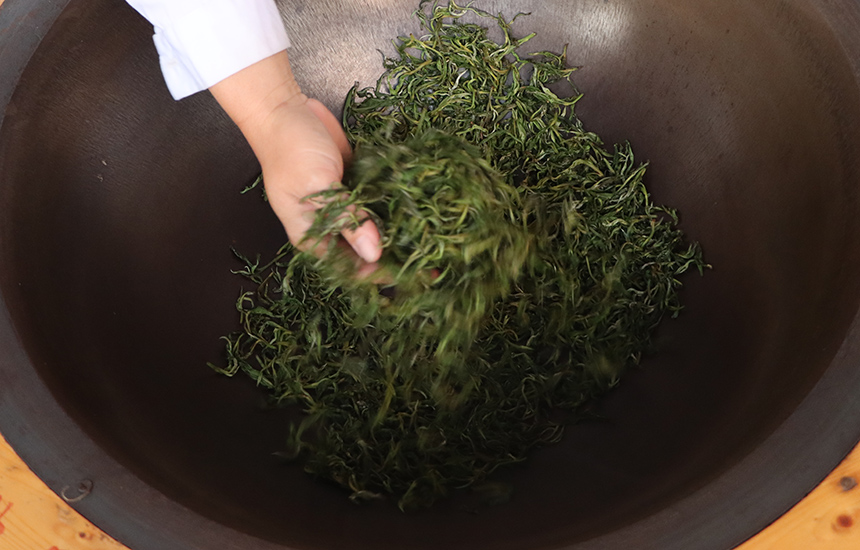
Yang Qingmei fries tea leaves. The process takes about two hours. (Photo/ Huang Ziyue)

The tea leaves' status suggests that the tea-making process is nearing completion. (Photo/Huang Ziyue)
Photos
Related Stories
- China releases first pan-genome map of tea plant
- Trending in China | 'Stove-boiled' tea steeped in new interest
- China's tea industry moves towards high-quality development
- Liubao tea industry thriving in Wuzhou, S China
- New-style tea beverages brew new consumption trend
- Dark tea industry thrives in county of C China's Hunan
Copyright © 2023 People's Daily Online. All Rights Reserved.






